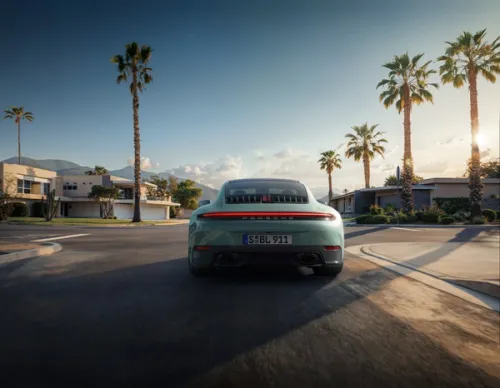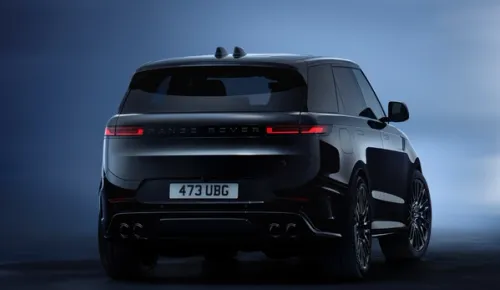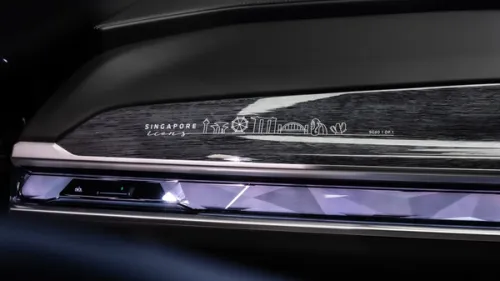Lexus RX400h Review: Lexus’ Eco/Luxury SUV
The world’s best-selling luxury SUV goes green, proving that it is possible to have one’s cake, and eat it, at the same time


It’s almost a marketing no-brainer – take the best-selling luxury SUV and make it an eco-friendly petrol/electric hybrid – and it will be a winner. That’s exactly what Lexus has done with its popular RX SUV, one of its best-selling models in Singapore, as well as in the important US market.
But unlike the Prius, Toyota’s first hybrid vehicle now in its second generation, Lexus has chosen to use the electric motors to make the standard RX even more powerful, as powerful as a 4.0-litre V8, which accounts for its numeric ‘400’ designation.
Quite clearly this is aimed at the American market, for which having a V8 is something to aspire to - a V6 that performs like a V8, but has the economy of a 4-cylinder, is the promise that of the RX400h.
Does it deliver? Well, it really depends on the driver. With 268bhp on tap, and one wants to find out if this V6 really performs like a V8, then the chances of the RX400h being much of a eco-friendly ‘green’ car are pretty slim. There is also the impressive 0-100km/h time of 7.9 seconds to verify, and the temptation to just forget about the environment and be indulgent. After all, a Lexus is a high performance luxury car, and the RX400h looks and feels like one.
Apart from a longer bumper with an additional air intake, a badge on the side and different tail lamps, it is really not obvious that the RX400h is that different from the standard RX350. Even on the inside, everything looks so ‘normal’. Certainly not present are the Prius’ complex-looking LCD screens that provide fuel consumption tables and flow charts that show which power unit is engaged, and which is dormant. In fact, the flow chart on the RX400h would be much more complicated than that of the Prius because the RX400h actually has two electric motors instead of just one on the Prius. Maybe they tried to develop a display, but it proved to be too distracting, and the decision was taken to leave it out entirely.
Upon closer inspection though, the instruments are different on the RX400h – instead of a tachometer to the left of the speedometer, there is a display that indicates by kilowatts (kW) the power that the electric motors are supplying. Without a tachometer though, one doesn’t know when the engine cuts off, and the car is running off its electric motors, and thus saving petrol. It is this switching off of the engine that allows hybrid cars to save fuel.
Without any display about the state of the engine, I used the trip computer’s fuel consumption reading to verify if the engine is running – if it reads zero litres/100km, I assume no petrol is being used. The engine also switches off when the car is stationary, and comes back on automatically once the batteries are low, or when accelerating from a standing start.
The reason the RX400h has two electric motors is that one works on the front wheels with the engine, while the other works on the rear wheels, making it a true 4-wheel drive vehicle. The rear motor comes in when traction is needed when moving off, when full acceleration is demanded, and also when loss of traction is detected in an off-road situation. In most instances, it is just the engine and front motor that work together to keep the RX400h in motion.
As mentioned earlier, there is very little to remind the driver of the RX400h that one is driving a sophisticated hybrid vehicle, one powered by two electric motors and an ultra-smooth V6 engine. And this tendency to forget that one is in a very advanced hybrid vehicle actually makes the reason for the RX400h quite perplexing. Is it because going green is something only the rich can afford to do? And they want to do so only if it means they can continue enjoying the high-life and living well, like nothing has changed?
In all other respects, it is easy to see why the RX has become so successful. It is impressively spacious for its size – it is shorter than the Toyota Camry, but there is more space in the cabin, especially for the rear passengers. The rear seats are particularly comfortable, and can be reclined independently for even more comfort. The car is a beautifully relaxed cruiser, quiet and tranquil as all Lexus’ are meant to be. It is also usefully handy – the boot is huge and has the same capacity as the standard RX350, and it can be expanded by folding the seats away. There seems to be no compromise in the RX400h being a hybrid vehicle that has a large battery under the rear seats. The rear tailgate is power assisted, and opens and closes at the touch of a button on the dashboard, or on the key fob. This is great for showing off, but also useful when one’s hands are full of shopping.
On the other hand, for the RX400h to incorporate all this additional hardware to become an effective petrol/electric hybrid, it has gained a bit of weight. It tips the scales at 2020kg, a weight gain of 160kg over the standard RX350. That’s like carrying two 80kg passengers around all the time! How much extra fuel is consumed by this extra weight? And one can feel this extra mass when braking – the RX400h certainly feels less agile than the standard car.
So yes, I take my hat off to Lexus for developing the RX400h – the first eco-friendly SUV on the market. As a marketing ploy it’s great – it gives the rich something to feel good about. But as an eco-friendly ‘green’ vehicle, it is perhaps too hedonistic to be convincing.
Credits: Justin Lee

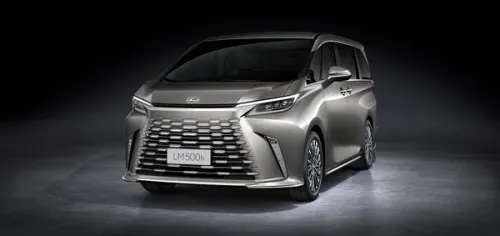
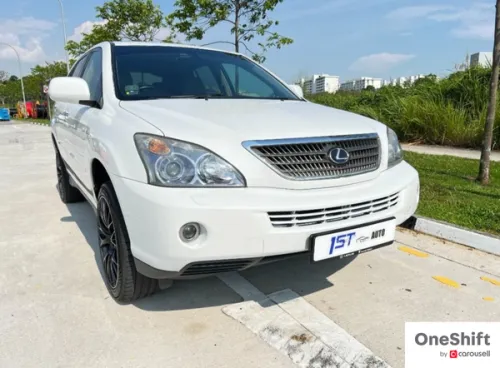


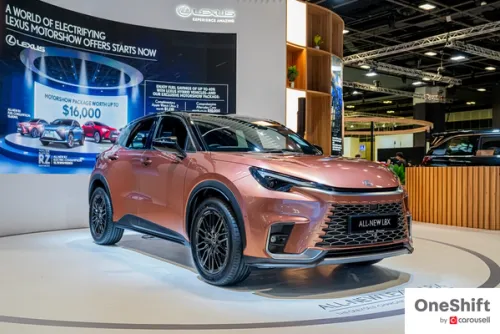


Get the Best Price for your used car
from 500+ dealers in 24 hours

- Convenient and Hassle-Free
- Consumer Protection
Transparent Process
With No Obligation
